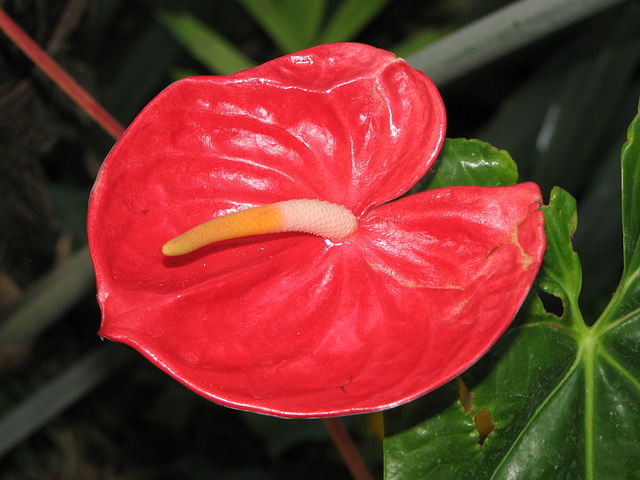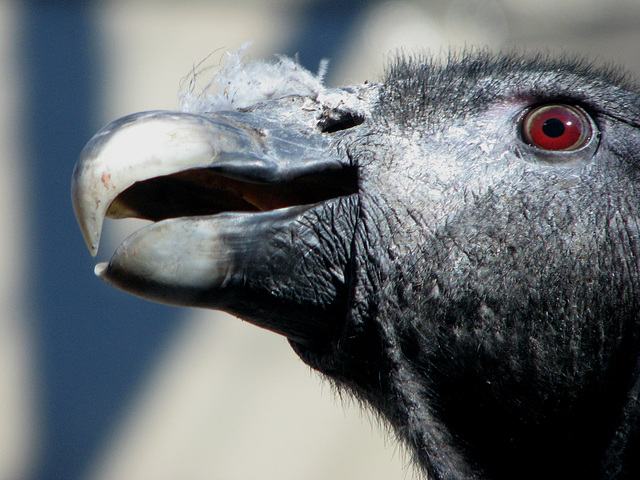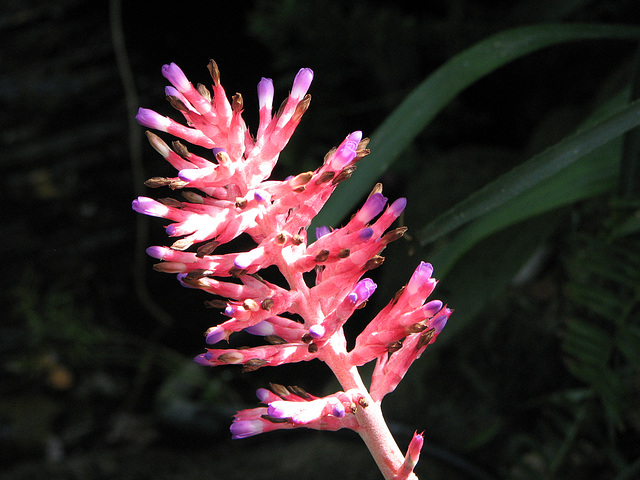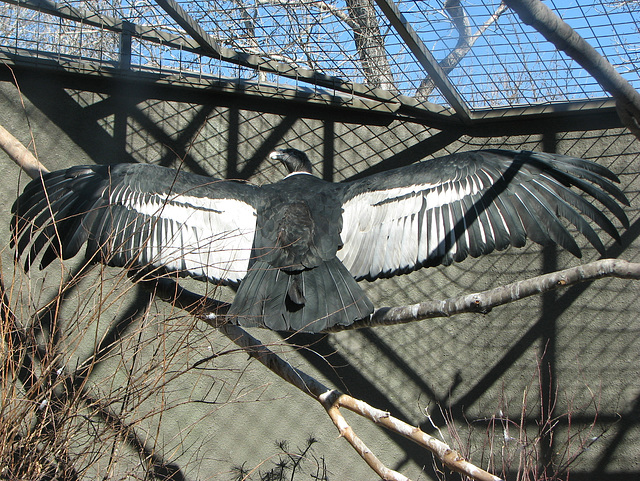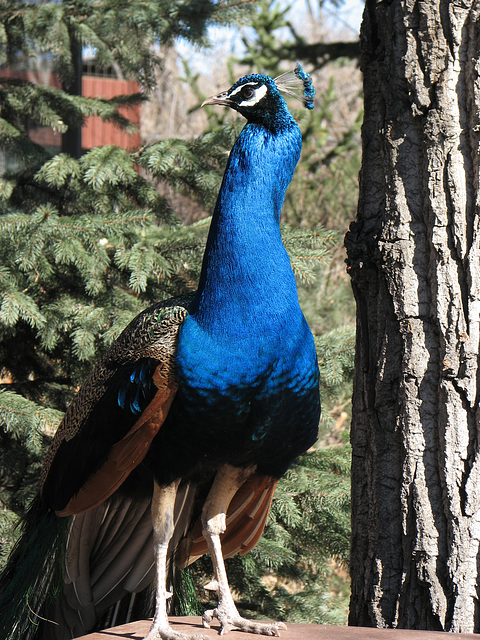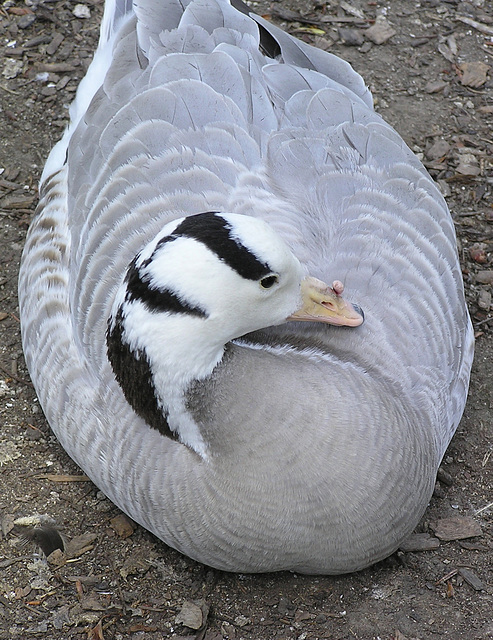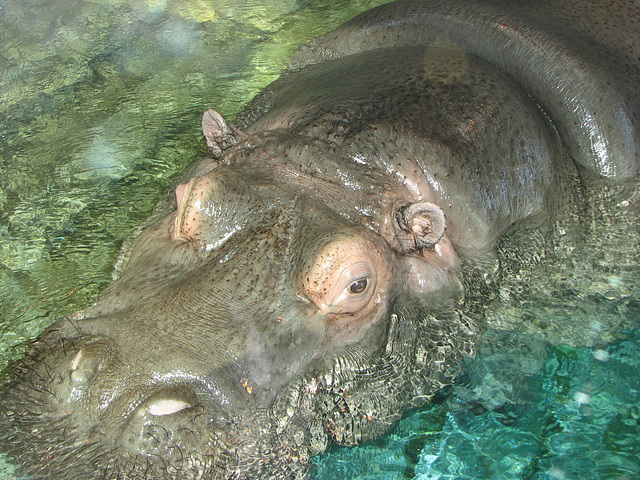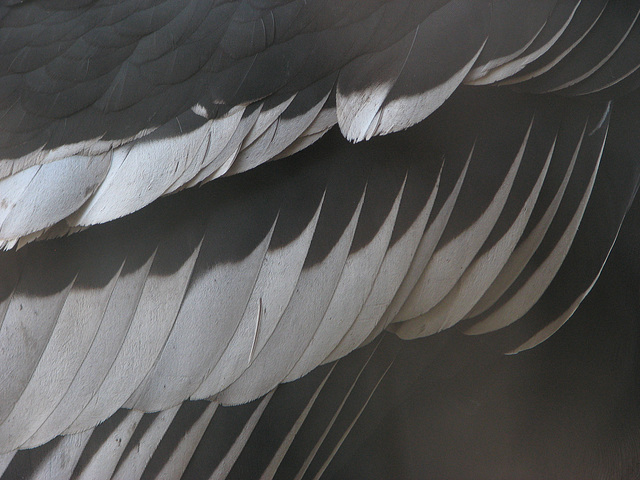
Calgary Zoo 1
26 Mar 2007
Antherium
I know there are lots of photos of these amazing plants "out there" but I just love to look at this brilliant red on my computer screen!
26 Mar 2007
Portrait of Shirley
A close-up of Shirley, the recently acquired female Andean Condor at the Calgary Zoo, to show the powerful bill and beautiful red eye (male has yellow). The few white feathers are from her white feather collar and not actually growing above her bill!
26 Mar 2007
Like a beacon
Think it's about time I had another visit to the Zoo, to help me deal with yet more snow, LOL! So enjoyable to see such bright colours and stunning plants, even though wildlife and wildflowers are my favorite things to photograph.
26 Mar 2007
12 feet wide
This photo shows the enormous wingspan of Shirley, the recently acquired female Andean Condor at the Calgary Zoo. The wingspan can get up to 12 feet!
26 Mar 2007
Beauty at eye level
This Peacock at the Calgary Zoo did a lot of posing, including up on this table.
26 Mar 2007
Hola, Lorenzo
Lorenzo again at the Calgary Zoo. He is the male of a pair recently acquired by the Calgary Zoo. This photo shows the comb on top of his head as well as his yellow eyes. The female has no comb and has red eyes.
"The Andean Condor, Argentinean Condor, Bolivian Condor, Chilean Condor, Colombian Condor, Ecuadorian Condor or Peruvian Condor (Vultur gryphus), is a species of bird in one of the vulture families. It is in many regards the largest flying land bird in the Western Hemisphere and is the heaviest, but not the lengthiest, member of the order Ciconiiformes.
This condor inhabits the Andes mountains. Although it is primarily a scavenger, feeding on carrion, this species belongs to the New World vulture family Cathartidae, related to storks and not closely related to Old World vultures, which are in the family Accipitridae along with hawks, eagles and kites.
The adult plumage is of a uniform black, with the exception of a frill of white feathers nearly surrounding the base of the neck and, especially in the male, large patches or bands of white on the wings which do not appear until the completion of the first moulting. As an adaptation for hygiene, the head and neck have few feathers, exposing the skin to the sterilizing effects of dehydration and ultraviolet light at high altitudes, and are meticulously kept clean by the bird. The head is much flattened above. In the male it is crowned with a caruncle or comb, while the skin of the neck in the male lies in folds, forming a wattle. The skin of the head and neck is capable of flushing noticeably in response to emotional state, which serves to communicate between individuals.
The female, contrary to the usual rule among birds of prey, is smaller than the male.
Wild condors inhabit large territories, often traveling 250 km (150 miles) a day in search of carrion. They prefer large carcasses such as deer or cattle which they spot by looking for other scavengers, who cannot rip through the tougher hides of these larger animals with the efficiency of the larger condor. In the wild they are intermittent eaters, often going for a few days without eating, then gorging themselves on several pounds at once, sometimes to the point of being unable to lift off the ground." Taken from Wikipedia.
12 May 2005
Bar-headed Goose
I have always thought this Goose at the Zoo was attractive, but only finally got round to identifying it today, ready for posting this image.
"The Bar-headed Goose (Anser indicus) is a goose which breeds in Central Asia in colonies of thousands near mountain lakes. It lays 3-8 eggs in a ground nest.
The preferred summer habitat is high altitude lakes where the bird grazes on short grass. It suffers predation from crows, foxes, kites, ravens, sea eagles and others. The total population may, however, be increasing.
The Bar-headed Goose migrates over the Himalayas to spend the winter in India, Assam, Northern Burma and the wetlands of Pakistan. The winter habitat of the Bar-headed Goose is on cultivation, and the bird feeds on barley, rice and wheat, and may damage crops.
The Bar-headed Goose is believed to be the highest flying bird having been seen at up to 10175 m (33,382 feet). It has a slightly larger wing area for its weight than other geese. It is believed this helps the goose to fly so high.
The Bar-headed Goose is often kept in captivity as it is considered beautiful and breeds readily in captivity from which it sometimes escapes. Records in Britain are frequent, and almost certainly relate to escapes - however, the species has bred on several occasions in recent years and around five pairs were recorded in 2002 (the most recent available report of the Rare Birds Breeding Panel). It is possible the species is becoming gradually more established in the UK. The bird is sociable and causes no problems for other birds. The wild population is believed to be declining due to over-hunting." Taken from the Wikipedia website.
13 Mar 2007
A study in greens
One of the two Hippopotami at the Calgary Zoo.
Added on 23 August 2012: it was a sad day for many people yesterday, when 47-year-old Foggy, one of the Hippopotami at the Calgary Zoo, had to be euthanized.
"Foggy, the 47-year-old hippopotamus at the Calgary Zoo who got his name from his foghorn-like bellow, was euthanized today by zoo officials because of the animal’s declining health.
The hippo, which came to the zoo in 1965 after being born at the Houston Zoo, had been in deteriorating health for several years because of its advanced age, zoo officials said in a news release.
“Sadly, the time had come when there was nothing more we could do to mitigate his many age-related ailments and we felt that his quality of life was simply not acceptable anymore,” said Jamie Dorgan, area curator.
The hippo fathered seven offspring during its life with three different mates, including three with its enclosure mate Sparky. Foggy was the oldest animal at the zoo."
© Copyright (c) The Calgary Herald
Jump to top
RSS feed- Latest items - Subscribe to the latest items added to this album
- ipernity © 2007-2024
- Help & Contact
|
Club news
|
About ipernity
|
History |
ipernity Club & Prices |
Guide of good conduct
Donate | Group guidelines | Privacy policy | Terms of use | Statutes | In memoria -
Facebook
Twitter

